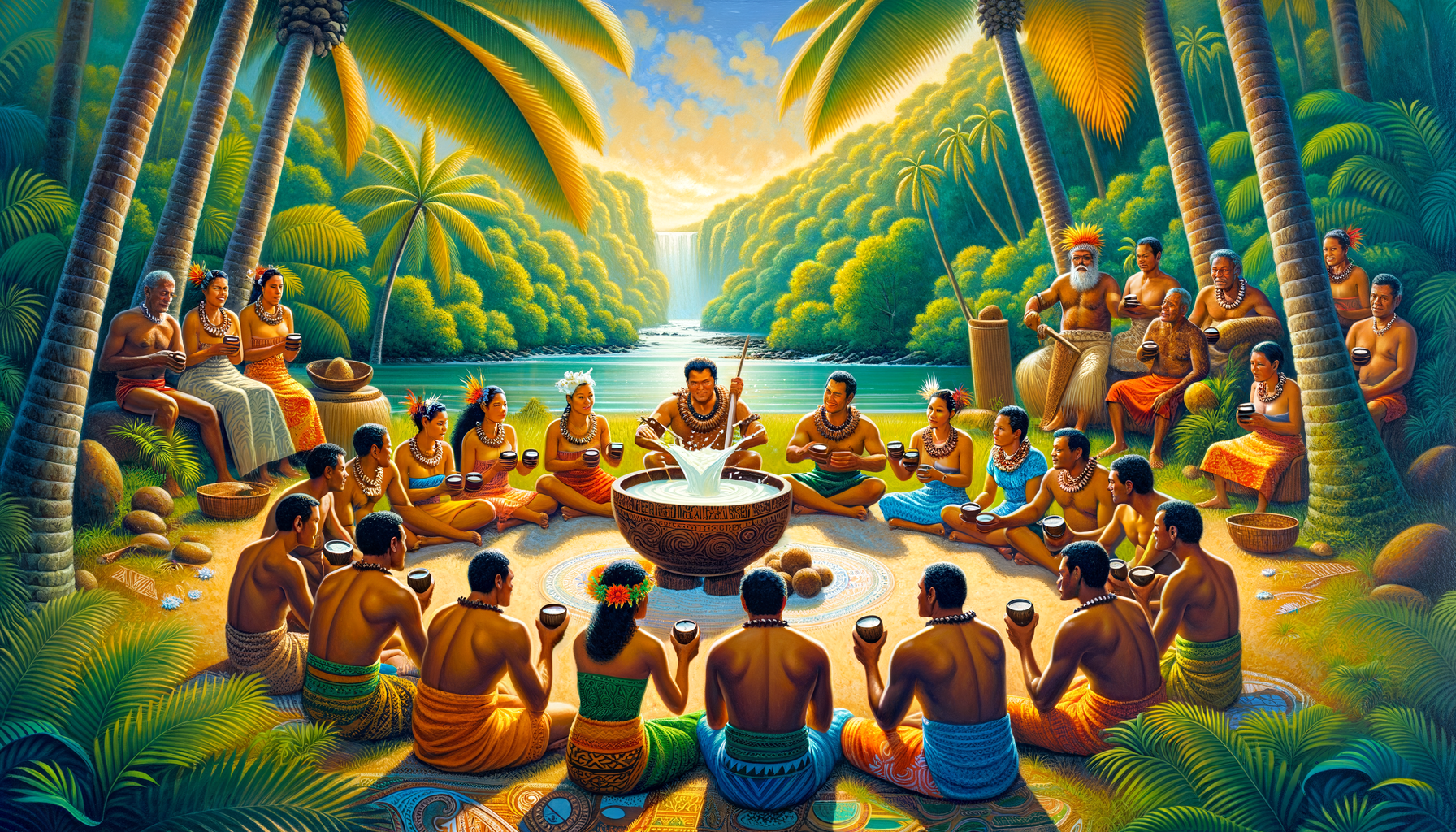What Is Kava?
Kava is a special drink from Fiji made from the root of a plant called Piper methysticum. It has been enjoyed in the Pacific Islands for more than 3,000 years, especially during ceremonies and social events.
How Is It Made?
In Fiji, people prepare kava by pounding the root into a powder, mixing it with water, and straining it. They serve it in a big bowl called a tanoa and drink it from little cups called bilo. This way of serving kava shows respect and brings everyone together.
Different Kinds of Kava
There are two main types of kava: Noble kava and Tudei kava. Noble kava is more popular because it has a balanced effect and is safer. Tudei kava is much stronger and lasts longer but is not used as much.
Kava in Fijian Culture
Kava is very important in Fijian culture. It helps bring people together and shows unity and peace.
Special Kava Ceremonies
Kava ceremonies are a big part of Fijian life. They happen at important events like weddings and funerals. People sit in a circle, sing songs, and clap while they drink kava. It’s a way to connect and show respect.
Matt Warren’s Story
Matt Warren, who helped start a company called Psychedelic Water, shared his first kava experience in Fiji. He said:
"I’ll never forget tasting kava for the first time in a small Fijian village. It felt amazing to be part of a group, sharing stories and laughter. Kava didn’t just relax me; it made me feel like I was part of a big family."
Benefits of Kava
Kava has many health benefits. It helps people relax, reduces stress, and makes social gatherings more fun.
How Kava Helps
Kava helps reduce stress and promotes relaxation because of special compounds called kavalactones that affect the brain. People also like kava because it helps them feel connected and happy when they drink it with others.
Debunking Myths
Some people think kava can harm your liver, but research shows it is safe if taken properly.
How to Make Kava
Traditional Fijian Way
To make kava the Fijian way, you need:
- Kava root powder
- A strainer bag
- A tanoa (big bowl)
- Bilo (small coconut shell cup)
Steps to make kava:
- Pound the kava root into powder.
- Put the powder in a strainer bag.
- Mix it with cold water while kneading the bag to get the kava into the water.
- Keep kneading until the water looks milky.
- Serve in a tanoa and share with friends and family.
Fun Kava Recipes
You can also try kava in new ways, like:
- Kava Colada: Blend kava with coconut milk and pineapple juice.
- Kava Mojito: Mix kava with mint leaves, lime juice, and soda water.
- Kava Chai Latte: Combine kava with chai spices and steamed milk.
Popular Kava Brands
If you want to try kava, some good brands are:
- Kalm with Kava: Known for smooth and balanced kava.
- Bula Kava House: Offers Fijian kava for beginners and enthusiasts.
- Kavafied: Sells instant kava and traditional powder.
Stories from Kava Lovers
Many people love kava and share their experiences of traveling to Fiji to try it. They talk about how kava has helped them relax, make friends, and feel part of a community.
Learn More About Kava
If you want to know more, check out these resources:
- Books: "Kava: The Pacific Elixir" and "The Art of Kava."
- Documentaries: "Kava: The Drink of Peace" and "Kava: The Beverage of the Pacific."
- Websites: KavaKist and Kava Forums.
Exciting News
The kava industry is growing with new products and events. Look for kava festivals, workshops, and meetups to connect with other kava fans.
Conclusion
Kava is more than just a drink. It’s a way to connect with others, enjoy health benefits, and participate in traditions. Explore Fijian kava and enjoy its many benefits. Visit KavaKist for more details and to buy high-quality kava products. Let’s raise a bilo to the joy of kava!

Leave a Reply